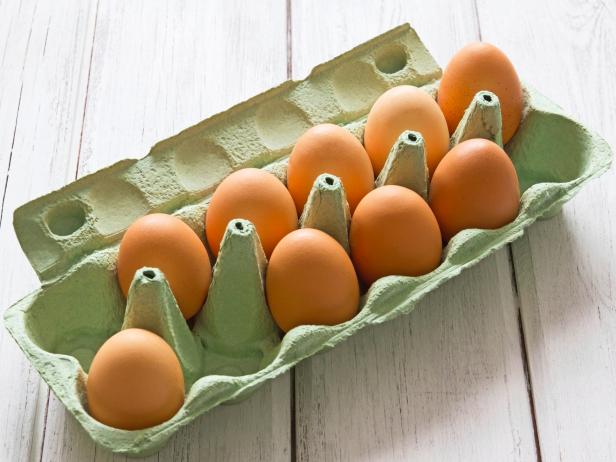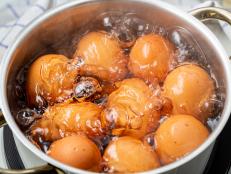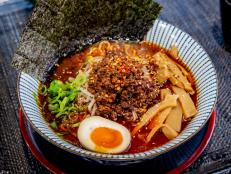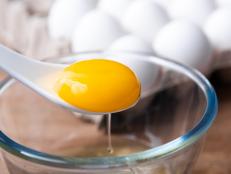Egg Labels Made Easier

There are so many egg varieties at the market these days, it's easy to crack under pressure if you don't know what labels mean. That said, no matter what the carton says or the type of eggs you buy, the most important thing to remember is this: The better the hens eat, the better the eggs.
The most nutritious eggs come from chickens that eat a healthy, balanced diet, meaning one that combines grains (chicken feed) with what the birds forage, such as seeds, grass and bugs (yes, insects are nutrient-dense and an important part of a hen's diet). The feed should be wholesome, not exposed to pesticides or loaded with animal parts. Seems "you are what you eat" applies to eggs too.
The following terms are typically found on egg cartons. Read on to decide what's best for you and your family.
"Free-range" is a term typically used to describe chicken meat, and it means the bird spends part of its time outside, whether it's roaming around farmland, or inside a barn, shed or coop (rather than being confined to a cage). There's no real regulation regarding the labeling of "free-range eggs," but the idea is that the chickens roam around freely part of the time before laying their eggs. The new term "barn-roaming" more accurately describes eggs that are laid by chickens that don't range freely but are able to roam around a barn (see Cage-Free, below). Free-range egg labels only convey information about the way the birds are treated; they don't say anything about what the hens are fed.
Cage-Free chickens are just that, hens that are not confined to cages. But do they actually get outside? Not likely. These chickens are free to roam around inside large chicken houses or barns, but they don't typically range freely or forage outside on farmland. Cage-Free labels also say nothing about the chicken's diet.
Eggs carrying the organic label must be certified by a third party, meaning this term is regulated. The USDA requires that organic eggs come from hens that have access to the outdoors and are not raised in cages. The bird's diet is also regulated and the feed must consist of certified organic, vegetarian grains that are free of GMOs (genetically modified organisms), synthetic fertilizers and animal by-products. But take note, although these hens have "access to the outdoors," large-scale egg producers simply put a wooden deck or concrete porch right outside the henhouse door.
Omega-3 fatty acids are essential fatty acids that reduce inflammation, triglyceride levels and blood pressure, among other things (we need these fatty acids for our bodies to function properly). Since our bodies can’t produce Omega-3 fatty acids, it's essential that we get them from food. Hence, fortified eggs. But this label says nothing about how the hens are treated or what else is in their fortified feed. Regarding Omega-3's, oily fish (anchovies, sardines, bluefish, herring, mackerel, wild salmon), walnuts and flaxseeds are also great sources.
If you can find locally farmed eggs (at a farmers market, for example), rejoice. Chances are, the hens have plenty of time outside where they can range freely and forage for food. The grains they're fed are more likely to be free of GMOs, pesticides and animal parts. But these things aren't guaranteed. Whenever possible, ask the egg farmers about their practices: How are the birds housed? Do they range freely? What type of grains are they fed? Listen carefully and, remember, you are what you eat.
Robin Miller is host of Quick Fix Meals, a nutritionist and author of 10 cookbooks, including “Robin Takes 5” and “Robin Takes 5 for Busy Families.” She is the busy mom of two active boys. Her boys and great food are her passion. Check her out at www.robinmillercooks.com.
































